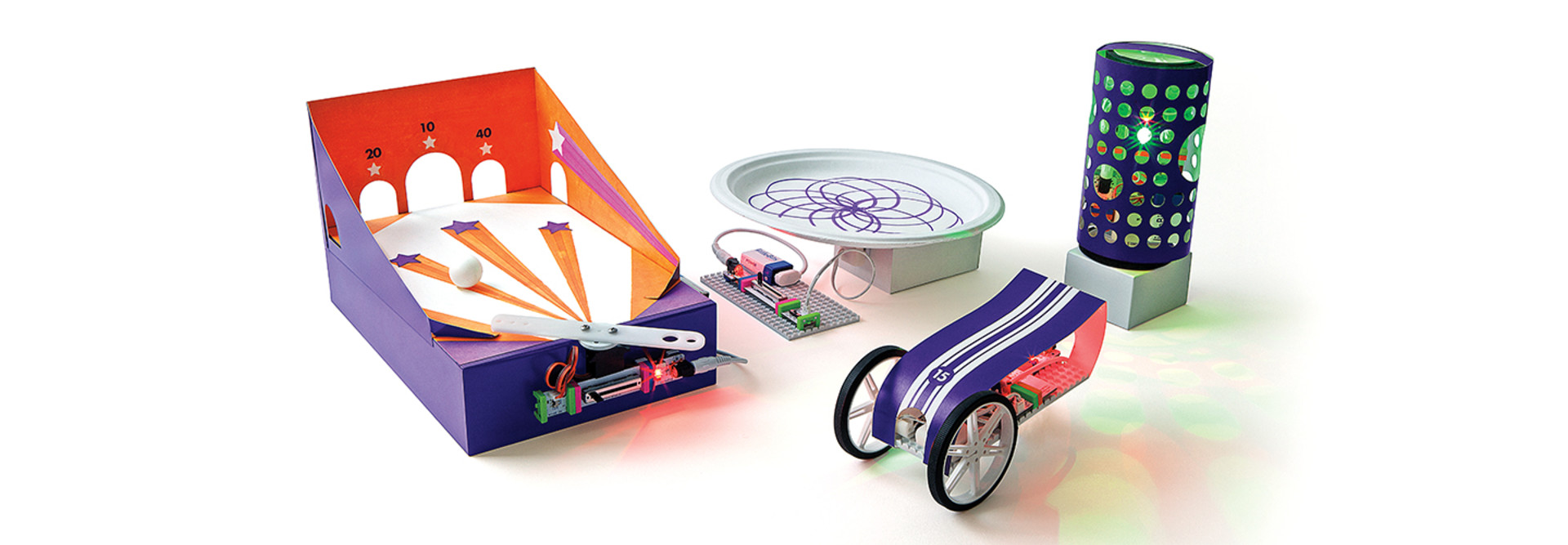Can Every Student Become an Inventor?
As a rigorous, hands-on science, technology, engineering and math (STEM) curriculum experiences a nationwide surge, schools continue to create demand for engineering resources.
In some spaces, students can 3D print their designs and use modular circuitryto bring them to life. In other settings, educators use electronic gizmos called littleBits to create opportunities for student invention and experimentation.
Connie Chow, an expert and advocate for equity in STEM learning, says littleBits fit into the Next Generation Science Standards, which integrate design and construction.
“If students are experiencing STEM as something to be tried — something that might not be figured out right away — that creates a more realistic sense of what science and engineering is,” Chow says.
The projected size of the 3D printing global industry by the end of the decade
SOURCE: Reuters, “Wave of future: 3D printing industry to quadruple by 2020,” May 2015
Makers Meet Project-Based Learning
Authentic scientific experiences early in education also increase the chances of students choosing STEM careers, Chow says. Teachers already are using littleBits — electronic building blocks that snap together with magnets and can combine with 3D printing technology — to design interdisciplinary projects.
LittleBits allow students to rapidly prototype and invent, says founder and CEO Ayah Bdeir. “Our platform is really about teaching how to think and design like a creative engineer and designer,” Bdeir says.
Bdeir describes a social studies lesson that began with the Americans with Disabilities Act leading to a project where students were challenged “to think about, develop and create an invention using littleBits to improve the lives of or standards of living for Americans.” One student created an enlarged keyboard for a fellow student who was born with limited dexterity in her hands.
Such projects show how littleBits is bringing the maker movement into mainstream education and facilitating a problem-solving, engineering mindset across the curriculum.
“We encourage educators to give students design challenges that involve creating their own inventions using a combination of littleBits and other components, including 3D printed objects,” says Bdeir. To provide more support to educators, an official guide for combining littleBits with 3D printing is being prepared.
Designed for All Students
Many K–12 STEM initiatives focus on attracting more girls, low-income students and other traditionally under-represented groups to consider STEM careers. Chow, who spent more than eight years mentoring girls in an after-school science club, describes littleBits as “very accessible to girls.” The projects shared on the Internet bear this out; scanning the littleBits website and YouTube, an equal number of girls and boys proudly share their inventions.
Another advantage of the modular circuits is that while they are perfect introductions to inventing and prototyping, students won’t outgrow them, Chow says. They are “toylike and nonthreatening,” but also a serious tool for professional engineers, programmers and artists, she says.
And if students ever dream up an invention that needs a new bit, Bdeir points out, “students can create their own Bits and start to engage in serious electrical engineering, if that is what they are interested in.”









